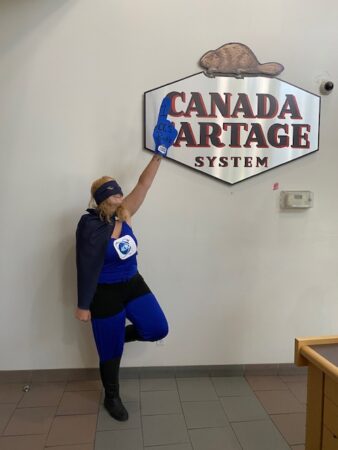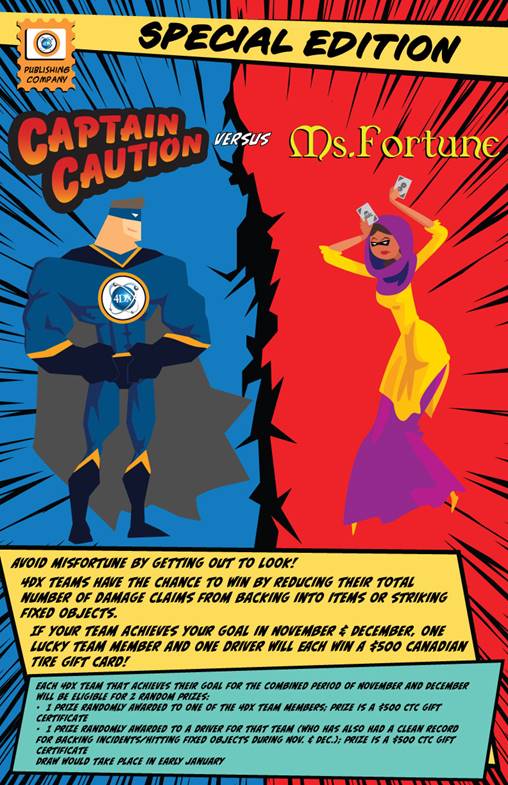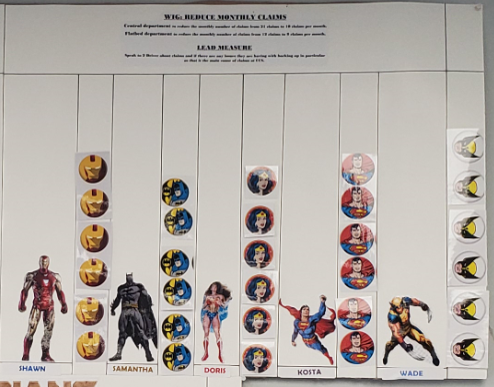Using 4 Disciplines of Execution to implement lasting corporate initiatives
Many corporate initiatives sound good in theory, but fail in implementation. Take, for example, that great idea you heard about at a business conference but forgot to follow through on because the second you returned to the office there were fires to be put out.
Several Canadian trucking companies have adopted FranklinCovey’s 4 Disciplines of Execution program and have generated lasting corporate initiatives by following the plan. Canada Cartage has run the program for four years.
“It has saved us millions of dollars over those four years,” said David Zavitz, chief administrative officer. He was describing the program at the Private Motor Truck Council of Canada’s annual conference. “It is designed to help companies with the challenge we all have, taking a corporate strategy and implementing it successfully.”
When Mike Gomes, vice-president – maintenance with Bison Transport, joined the company nearly six years ago, it was already running 4DX. Gomes was familiar with the program having used it at a previous employer.
“What it really boils down to is very simple. It’s four disciplines you follow on a consistent basis. You form teams and the idea behind it is the consistency of the commitment to the program,” said Gomes. “You can do it in any size organization, it’s completely adaptable.”

Those four disciplines are: focus on the wildly important; act on the lead measures; keep a compelling scoreboard; and create a cadence of accountability.
The goal is to focus on one “wildly important goal” – the WIG. Often, corporate goals aren’t achieved because those in charge of executing them get caught up in the day-to-day grind of the business, dubbed by 4DX as “the whirlwind.” Think equipment breakdowns, driver turnover, covering loads, and the like.
4DX teaches to take the WIG and incorporate the pursuit of it into the whirlwind. “4DX is designed to work within the whirlwind, not against it,” Zavitz said. Typical campaigns will run from four to six months. Some of the campaigns Canada Cartage has chosen focused on: reducing idling; decreasing workplace injuries; and improving driver satisfaction.
The idle reduction campaign has saved the company more than $2 million, Zavitz said, “and the maintenance guys are telling us we’re saving a huge amount of wear and tear on the truck engines.”
The only campaign that fell short of its target was driver satisfaction, but Zavitz said it generally takes several years to move the needle in that category.

“It doesn’t work every time, but we’ve had way more winners than clunkers,” he said.
At Bison, Gomes said five of seven campaigns were “highly successful” while the other two were “successful in their own ways.”
A campaign on expense reduction saw the company exceed its target by more than 20%. “And it was a substantial goal, over $10 million,” Gomes added.
Another important aspect of the program is accountability. Teams are formed at different terminals and “players” need to follow through on daily or weekly commitments to help the company meet its goal. For instance, when focusing on damage claims one team determined a certain LCBO store was the scene or more backing incidents and damage claims than other delivery points.
A team member visited the store to see what could be done about – was the trailer too long for the site? Was a garbage bin affecting the driver’s view while backing? Were vehicles parked where they shouldn’t have been? Then, discussions were held with the store to make the site more driver-friendly.

Another key is to make it fun, Zavitz said. A theme is created for each campaign. During a safety campaign, an Edmonton employee would dress up as Captain Caution to raise awareness of the initiative. For the idle reduction campaign, the company hosted a Canadian Idle show.
“We’ve been surprised at the level of engagement we got from our drivers and staff,” said Zavitz. “We had quite a bit of fun with it.”
Some of the savings went toward prizes for drivers, things like barbecues, bikes, gift cards, and patio sets. The idle-reduction campaign that netted $2 million and counting in savings cost about $100,000 to execute, Zavitz said, including prizes. Now that it has run the program for several years, it saves money on the consulting side and its latest program cost about $70,000 to put in play.
“After six weeks of the program, we’ve crushed our target,” Zavitz said of the current campaign on cargo claims and property/vehicle damage. “We’re going to save tons of money, it’s safer for drivers and better for the trucks and our customers.”
Bison continues to adapt 4DX for its own purposes, and Gomes said the key to success is ensuring buy-in from all levels of the business.
“It can’t just be a push into the business,” he said. “You have to have buy-in from every level of the business.”
Have your say
This is a moderated forum. Comments will no longer be published unless they are accompanied by a first and last name and a verifiable email address. (Today's Trucking will not publish or share the email address.) Profane language and content deemed to be libelous, racist, or threatening in nature will not be published under any circumstances.